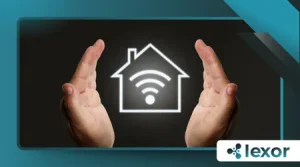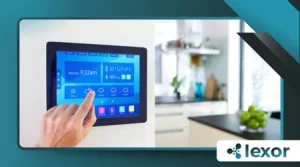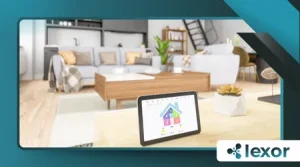What Is Home Automation and Is It Worth It?

The modern home is no longer just four walls and a roof—it’s an intelligent, responsive ecosystem. What is home automation?
At its core, it’s the seamless integration of smart devices that communicate with each other to enhance convenience, security, and efficiency.
From lights that adjust based on natural daylight to thermostats that learn your schedule, automation transforms passive living spaces into dynamic environments.
But beyond the novelty, does it deliver real value? Critics dismiss it as an expensive gimmick, while advocates argue it’s the future of sustainable living.
The truth lies in the details—how these systems integrate into daily life, their long-term cost benefits, and whether they truly make homes safer and more efficient.
As we step further into 2025, smart home technology isn’t just for early adopters anymore.
With major advancements in AI, energy management, and cybersecurity, automation is becoming more accessible and reliable. So, is it worth the investment?
Let’s dive deep into the mechanics, benefits, and potential drawbacks to uncover the real answer.
The Evolution of Smart Homes: From Sci-Fi to Everyday Reality
Not long ago, home automation was a futuristic concept reserved for high-end prototypes.
Today, it’s a mainstream phenomenon, with the global smart home market projected to exceed $135 billion in 2025 (Statista).
The shift from luxury to necessity has been driven by three key factors: affordability, interoperability, and consumer demand for efficiency.
Early systems were clunky, requiring complex setups and proprietary hubs. Now, platforms like Google Home, Amazon Alexa, and Apple HomeKit allow seamless integration across brands.
A homeowner can control lights, locks, and cameras from a single app—or even through voice commands.
But the real game-changer has been AI. Machine learning enables devices to adapt to user behavior.
For example, a smart thermostat like the Ecobee SmartThermostat doesn’t just follow a schedule—it analyzes occupancy patterns and weather forecasts to optimize heating and cooling.
This level of intelligence was unimaginable a decade ago.
++What Makes Bitcoin Valuable?
Another driving force is sustainability. Governments and energy providers now incentivize smart home adoption through rebates for energy-efficient devices.
In California, for instance, homeowners can receive up to $150 for installing a smart thermostat (Energy Upgrade California). This policy shift reflects automation’s growing role in reducing carbon footprints.
The next frontier? Predictive automation. Soon, systems won’t just react—they’ll anticipate needs.
Imagine a home that prepares your coffee when it senses you waking up or adjusts lighting based on your mood detected through biometrics.
The line between a house and a responsive living assistant is blurring fast.

Breaking Down the Core Components of Home Automation
A fully automated home isn’t just about voice assistants—it’s an ecosystem of interconnected devices working in harmony. Understanding the key components helps demystify how these systems function and why they matter.
1. Smart Lighting: Beyond On/Off Switches
Gone are the days of manually flipping switches. Smart bulbs like Philips Hue or LIFX adjust brightness and color temperature based on time of day, reducing eye strain and improving sleep.
++How Smart Plugs Make Your Life Easier
Motion-activated lighting in hallways and bathrooms enhances safety while cutting energy waste.
For example, a study by the American Lighting Association found that smart lighting can reduce household electricity usage by up to 30%. That’s not just convenience—it’s measurable savings.
2. Climate Control: Learning Your Comfort
Heating and cooling account for nearly 50% of home energy use (U.S. Department of Energy).
Smart thermostats like the Google Nest or Ecobee optimize HVAC systems by learning routines and detecting empty rooms.
A real-world case? A family in Colorado saved $200 annually after switching to a Nest Learning Thermostat.
The device adjusted temperatures automatically when they were at work and pre-warmed the house before their return.
3. Security & Surveillance: Peace of Mind, Anywhere
Smart locks (e.g., August or Yale) eliminate the need for physical keys, allowing remote access via smartphone.
++The Role of Voice Assistants in Smart Homes
Meanwhile, AI-powered cameras like Arlo or Ring can distinguish between a delivery person and an intruder, sending alerts only when necessary.
A notable example: A homeowner in Florida thwarted a break-in when their smart camera detected unusual movement at 3 AM and triggered an alarm while notifying the police.
4. Energy & Water Management: Cutting Waste Intelligently
Smart plugs and energy monitors track appliance usage, identifying power-hungry devices. Leak detectors like the Moen Flo automatically shut off water if a pipe bursts, preventing costly damage.
Read more: Virtual Reality in Tourism: Exploring the World from Home
In drought-prone areas like Arizona, smart irrigation systems (such as Rachio) adjust watering schedules based on weather forecasts, reducing water waste by up to 50%.
The Cost vs. Value Debate: Is Home Automation a Smart Investment?

Skeptics argue that smart homes are an unnecessary luxury, but the numbers tell a different story.
While upfront costs can be significant—ranging from $1,500 for basic setups to $15,000+ for whole-home automation—the long-term savings and benefits often justify the expense.
1. Energy Savings Add Up Fast
As mentioned earlier, smart thermostats and lighting can slash utility bills by 10-30%. Over five years, that could mean $1,000+ in savings—enough to offset the initial investment.
2. Insurance Discounts
Many insurers offer discounts (up to 20%) for homes with monitored security systems. State Farm reports that burglary claims drop by 55% in homes with smart security devices.
3. Increased Property Value
A 2024 study by CNET found that homes with integrated automation sell 5-8% faster and at a premium compared to non-smart homes. Buyers increasingly view these features as standard, not optional.
4. The Convenience Factor: Time Is Money
How much is your time worth? Automating repetitive tasks—like adjusting blinds, preheating the oven, or watering the lawn—frees up hours each week. For busy professionals, that’s an intangible but real benefit.
Still, not every gadget is worth it. Cheap, unreliable devices can frustrate more than they help. The key is prioritizing systems with proven ROI: security, climate control, and energy management.
Security Concerns: Are Smart Homes Vulnerable to Hacking?
Cybersecurity remains the elephant in the room. Stories of hacked baby monitors and hijacked smart locks fuel skepticism. However, the risks are often overstated—and manageable with proper precautions.
1. Encryption & Secure Networks
Leading brands like Apple HomeKit use end-to-end encryption, making unauthorized access nearly impossible. A strong Wi-Fi password and a separate guest network for IoT devices add extra layers of protection.
2. Regular Firmware Updates
Many breaches exploit outdated software. Enabling automatic updates ensures devices have the latest security patches.
3. Privacy Trade-Offs
Voice assistants like Alexa record snippets of conversations. While Amazon claims these are anonymized, privacy-conscious users may opt for local-only systems like Home Assistant.
The bottom line? Smart homes are as secure as you make them. With basic precautions, the benefits far outweigh the risks.
The Future of Home Automation: What’s Next?
By 2030, AI will predict needs before we voice them. Think:
- Self-maintaining homes (e.g., sensors detecting a failing HVAC component and scheduling repairs).
- Biometric integration (e.g., lighting that adjusts based on your stress levels).
- True interoperability (no more brand lock-in; all devices communicating seamlessly).
The smart home of tomorrow won’t just respond—it will anticipate.
Final Verdict: Is Home Automation Worth It?
For those prioritizing security, efficiency, and convenience, the answer is a resounding yes. What is home automation if not the next logical step in modern living?
For further reading, check:
The initial costs are offset by long-term savings, safety benefits, and sheer quality-of-life improvements.
Like any investment, research is key. Focus on systems with proven reliability and avoid gimmicky gadgets. Done right, a smart home isn’t just a luxury—it’s a smarter way to live.
Frequently Asked Questions (FAQs)
1. How much does a basic home automation system cost?
Entry-level setups (smart lights + thermostat + security camera) start around $500. Whole-home automation can exceed $15,000.
2. Can I install smart devices myself?
Many devices are DIY-friendly (e.g., smart plugs, bulbs). For complex systems like security panels, professional installation is recommended.
3. Do smart homes work during power outages?
Most devices rely on Wi-Fi, so they’ll go offline unless you have a backup battery or generator.
4. Are renters able to use home automation?
Yes! Renters can use portable devices like smart plugs, cameras, and plug-in thermostats (no wiring required).
5. Which is better: Alexa, Google Assistant, or Apple HomeKit?
- Alexa: Best for compatibility.
- Google Assistant: Strongest AI.
- HomeKit: Best for privacy.
